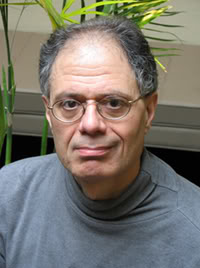Ernest Callenbach’s “Ecotopia” was prodigious—the finest utopian fiction in decades. Its sequel, just published, is not quite up to the same mark. “Ecotopia Emerging” is merely wonderful.
“Ecotopia” introduced a new country: the American Northwest (Washington, Oregon, northern California) in 1999, nearly two decades after its American journalist allowed into Ecotopia since secession described the new nation’s economy, politics, community, technology, culture, sexuality, race relations, and so on. His reports and diary portrayed a society that had realized classical libertarian ideals as well as the most advanced, ecologically responsible technology, and had attained a biologically and socially “stable state” while the rest of the mainland slid into economic chaos, political repression, and environmental disaster. In outline and in detail (except, alas, chronology) “Ecotopia’s” vision of this brave new world was breathtakingly plausible. It left only one important question unanswered: how do we get there from here?
“Ecotopia Emerging” tells how. It constructs a scenario in which many of the promising ideas of the last few decades— ideas about participatory democracy, direct action, decentralization, sexual equality, ecology, and alternative energy sources—enter current history and inspire social movements. Alternating short narrative segments with historical meditations, news reports, intelligence memos, and political speeches, the novel achieves an almost cinematic effect, one which strikingly mimics the rhythm and atmosphere of actual historical processes.
The main strands of the story are: the development of a simple and efficient photovoltaic cell by a California high school student, under the shadow of desperate oil and power companies and harassing FBI agents; the spread in the Northwest of a mass, grass-roots party, the Survivalists, who at first advocate mainly ecological sanity and energy self-sufficiency, but soon espouse economic decentralization, workers’ control, local autonomy, and an end of weapons production; and a sharpening conflict through the early 1980s between the Survivalist Northwest and an increasingly bankrupt, militarized, and repressive United States, climaxing in secession at a moment when American troops are tied down by insurgencies in Brazil and Saudi Arabia.
The book’s political center of gravity is the progress of the Survivalist Party. A bunch of friends, mostly Bay Area professionals, are galvanized by the continuing corporate and governmental assault on common sense, public safety, and the environment. From a loosely knit study group, they become an action group, cooperating with local struggles, forming a net work of community, labor, religious, and academic people, issuing reports and back ground papers, speaking in neighborhoods and over cable television. As popular participation grows and the Northwest is menaced by a national government in thrall to the energy, auto, and defense industries, the party becomes a mass movement.
It’s an enormously exciting and hopeful movement. The Survivalist program touches all the right bases—socialist, feminist, libertarian, ecological. Internally, the party is democratic and nonhierarchical. And in the series of cable broadcasts in which the emerging Survivalist/Ecotopian vision is elaborated, Callenbach provides a model of persuasive, responsible, nondemagogic radical propaganda.
